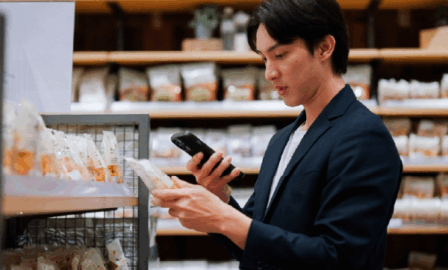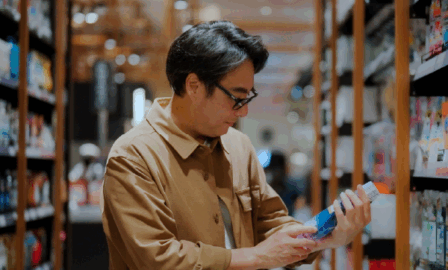Driving Brand Engagement and Omnichannel Sales: A CPG Advertising Playbook for Super Bowl Campaigns
Super Bowl LVIII, held in Las Vegas, Nevada, set a viewership record for the second consecutive year, drawing 123.4M across platforms. With such a tremendous and diverse stage this year in particular, companies invested in kind to grab attention, increase brand engagement, and drive sales. Given the competitive and crowded landscape that characterizes many CPG categories, companies must look past the Super Bowl as a singular ad opportunity, instead seeing a chance to create a holistic marketing campaign that reaches and engages customers, especially after game day. Bolstering traditional ads with social media and other digital-first marketing helps to differentiate CPG firms from their competition, allowing them to share their message more readily with consumers. Let’s dive into a few insights based on the CPG advertising playbook of campaigns that was displayed during the Super Bowl.
Of the several dozen companies that purchased Super Bowl ad slots, a few stood out by capitalizing not only through their game day ads but also through social media leading up to and following the Super Bowl. Dunkin Donuts, CeraVe, and Pepsi built hype leading up to the Super Bowl, delivered on the hype during the game, and capitalized post-game through holistic campaigns to drive brand engagement.
Notably, these three brands followed a similar playbook to plan and curate “phygital” experiences (ones that marry online/in-app and in-store experiences) and drive omnichannel sales:
- These brands listened to, understood, and connected with their current consumers and those they aspire to attract, as well as the trends that define them.
- These brands approached their Super Bowl ads as holistic campaigns, not just one-day events, by releasing a variety of content in the weeks leading up to game day, as well as after.
- These brands leveraged social media through celebrities, influencers, and the general public to drive hype, build trust, and guide users to their sales channels following the game.
This piece will further explore how CPG firms leveraged the above factors to strengthen their connection to existing customers, reach new ones, and create a sales pipeline online and in store.
This Year’s Backdrop: A CPG Advertising Playbook
Super Bowl viewership has become increasingly diverse in recent years, particularly among women and teen girls. Viewership among 18–24-year-old women rose 24% since last year with women representing 47.5% of overall viewership. Additionally, viewership among teen girls in Gen Alpha (ages 12-17), jumped 11% since last year. This spike in Gen Alpha viewership may be in part, due to interest in the Taylor Swift-Travis Kelce romance; however, female viewership has been up across the board this season. This presented a unique opportunity for CPG firms to reach broad audiences across generations and genders. CPG companies capitalized on this through their use of social media, celebrities, and influencers to facilitate trust and engagement with their brands.
Dunkin Donuts – DunKings
Dunkin Donuts is already a household name, therefore, its Super Bowl ad campaign focused on announcing the new DunKings menu, connecting with customers, and driving omnichannel sales. The “DunKings” ad was the culmination of several teasers released on X (formerly Twitter) and YouTube, leading up to game day and featuring actor Ben Affleck and TikTok influencer Charlie D’Amelio, who commands a following of 80M fans. The brand’s decision to include Boston natives Affleck, Matt Damon, and former Patriots quarterback Tom Brady demonstrated Dunkin’s understanding of its core customers and overwhelming popularity in Boston. Additionally, featuring D’Amelio was a nod to its Gen Z and Gen Alpha audience.
While the main purpose of Dunkin’s ad was to introduce the new “DunKings Menu,” they have capitalized on the campaign since the Super Bowl by selling DunKings tracksuits, (which sold out in 19 minutes), hats, and drink tumblers. Dunkin has also launched a customizable line of Funko Pops sporting the aforementioned DunKing’s tracksuit. While this merchandise falls outside of Dunkin’s core offerings, it drove web drive traffic, and conceivably app downloads, leading to drink pre-orders for in-store pickup. Dunkin’s campaign spanned digital and physical touch points, appealed to broad audiences, and created a pipeline for their omnichannel sales.
CeraVe
Through their experiential marketing campaign, CeraVe put skincare at the forefront, capitalizing on this Super Bowl’s diverse viewership. In the preceding weeks CeraVe released a teaser ad, enlisted influencers Haley Kalil and Caleb Simpson to post “organic” and candid videos, and leaked fake paparazzi photos teasing Michael Cera’s connection to their brand. The humorous campaign reached Gen Alpha, Gen Z, and Millennial audiences who follow these influencers on social media, but potentially Baby Boomers, too due to their rising social media usage. This is notable as Baby Boomers have the greatest buying power of the current generations.
The timing of CeraVe’s campaign also coincides with a rapidly growing obsession among Gen Alpha in “adult” skin care routines driven largely by social media influencers, helping CeraVe bridge the “trust gap” between brands and consumers. This push to attract Gen Alpha also comes as they stand to gain more buying power and influence in their teenage years. Lastly, and most notably, CeraVe’s decision to feature a male spokesperson helped drive the point that skincare isn’t just for women but for everyone.
Pepsi
By contrast, long-time NFL sponsor Pepsi chose not to run a Super Bowl ad as they’ve done in years past. They instead chose to promote their new Wild Cherry drink by curating an immersive marketing experience through social media, traditional ads, and on the Las Vegas strip enlisting celebrities and influencers. Pepsi displayed ads on The Sphere and created the “Pepsi Big Game Vault,” a vault fans could enter and meet Los Angeles Rams wide receiver Puka Nacua. They also engaged TikTok’s most followed creators Khaby Lame (with a TikTok following exceeding 161M) and Zach King, who posted videos alongside Shaq and others. By Monday morning, these videos exceeded 24M views. With declining interest in soft drinks among Gen Z, this campaign also served as an olive branch to build brand affinity with younger consumers. Like Dunkin and CeraVe, Pepsi curated a holistic and “Phygital” experience for customers to drive online engagement and in-store sales.
Final Thoughts
The social media-centric marketing campaigns run by Dunkin, CeraVe, and Pepsi highlighted the importance to CPG companies of creating phygital experiences to drive omnichannel sales. In recent years, we’ve seen a precipitous raise in social commerce, with links to buy products placed directly in social media posts. We also know that half of consumers rely on omnichannel shopping to meet their needs.
These digital campaigns tee up the ability to sell through company’s social media platforms and that of their network of influencers, supplementing brick-and-mortar sales. Traditional ads are no longer enough to reach customers. Marketing across channels ensures brand messaging reaches customers, creates differentiation, and delivers the greatest return on marketing investments. Such campaigns exemplify how CPG brands can leverage social media and influencers to build trust and reach new audiences. Companies that listen to and understand their customers, create holistic “Phygital” experiences, and use spokespeople who connect with audiences will stand out in the digital economy.
For more emerging trends on omnichannel brand strategies in the CPG space, reach out to our team today.
Subscribe to Clarkston's Insights
Contributions from Jacob Elson



